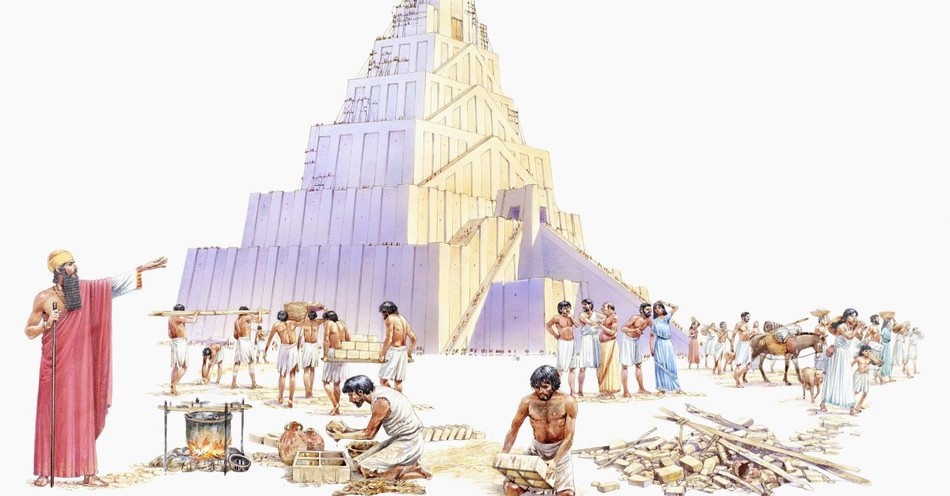I was first introduced to the word ‘nimrod’ not from the Bible but by a Saturday morning Looney Toons bit. There is a sequence between Daffy Duck and Elmer Fudd where Daffy calls Elmer “my little nimrod.” From this bit, my young mind assumed that the meaning of nimrod was idiot or dumb. But if you investigate the word’s origin, you will find a completely different meaning.
The word nimrod has a bizarre history. In the sixteenth century, nimrod meant tyrant. Come the seventeenth century, the word was used to describe a hunter, and then in the nineteenth century, it had taken on the meaning of an inept hunter or person. Some suggest that Nimrod, in the original Semitic root, translates as marad, meaning “to rebel.”
All these different meanings point to the biblical character and myths around a man named Nimrod.
Where Does the Bible Mention Nimrod?
There are three places in scripture where Nimrod’s name is mentioned.
The man Nimrod first makes his appearance in Genesis 10:8-12. He is described as “a mighty hunter before the Lord” (Genesis 10:9), and “he went to Assyria, where he built Nineveh, Rehoboth Ir, Calah, and Resen” (Genesis 10:11).
Again, Nimrod is mentioned in 1 Chronicles 1:10 in another list of genealogies.
His last mention is in Micah 5:6:
“…who will rule the land of Assyria with the sword, the land of Nimrod with drawn sword. He will deliver us from the Assyrians when they invade our land and march across our borders.”
Though we are not told much about this biblical character, many myths and legends surround this man called Nimrod.
Is Nimrod Related to Any Biblical Figures?
Chapter 10 of Genesis is known as the Table of Nations, listing the descendants of Noah’s sons. In the lineage of the Hamites is where we find Nimrod. Genesis 10:6 lists the sons of Ham, one of Noah’s sons, as “Cush, Mizaraim, Put, and Canaan.”
Then, in verse eight, Nimrod is listed as one of Cush’s sons. This makes Noah, who built the Ark (Genesis 6-9), Nimrod’s great-grandfather. As well as making Nimrod the nephew of Canaan, the son of Ham who was cursed in Genesis 9:20-27.
In scripture and other religious text, there is unclear evidence to suggest that the curse of Canaan was only on Ham’s son Canaan and his lineage or if it was a curse for all of Ham’s descendants to be servants of Shem (Genesis 9:27).
Is Nimrod an Important Figure in the Bible?
Of all of Ham’s descendants, Nimrod is the only one we get specific details about, which does set him apart from others in the genealogy.
We are also told that the “centers of his kingdom were Babylon, Erech, Akkad, and Calneh in Shinar” (Genesis 10:10). Crosswalk contributor Alyssa Roat mentions in “7 things you didn’t know about Nimrod” that the description indicates that Nimrod was a king, and a mighty one if his territories included the famous cities Babylon and Nineveh.
Several commentaries, including William Ewing’s The Temple Dictionary of the Bible, suggest that Nimrod may be the Hebrew name of Sargon I, an early Akkadian king. Archeologist Dr. Randal Price also suggests that “archaeological excavations in ancient Mesopotamia provide historical evidence for Nimrod’s identity as Sargon.”
What Do Later Traditions Say about Nimrod?
From the little bit of what we are told in Genesis 10 about Nimrod, he had gained much traction as a larger-than-life character in other historical writings.
Some scholars suggest that Nimrod and the Sumerian character of Gilgamesh are the same men. The parallels between the two are very interesting. Nimrod’s rise to power is after the Great Flood, and as we discussed above, the name Nimrod might suggest a rebellion rather than an actual name. In the Epic of Gilgamesh, the hero Gilgamesh seeks to kill the god that caused the flood and sets out on a quest to do just that. Upon returning, Gilgamesh claims that the people no longer need to fear god, for Gilgamesh had killed him.
Dr. David P. Livingston, from the Associates for Bible Research, states, “The Gilgamesh Epic describes the first ‘God is dead’ movement. In the Epic, the hero is a vile, filthy, perverted person, yet he is presented as the greatest, strongest, hero that ever lived (Alexander Heidel, 1963: 18).” This has a lot of similarities to how Nimrod is described.
Although the International Standard Bible Encyclopedia states, “Nimrod has not been identified with any mythical hero or historic king of the inscriptions. Some have sought identification with Gilgamesh, the flood hero of Babylonia (Skinner, Driver, Delitzsch); others with a later Kassite king (Haupt, Hilprecht), which is quite unlikely…”
The legend of Nimrod grew even more in the historian Josephus’s writings. He wrote this on Nimrod,
“He also said he would be revenged on God if he should have a mind to drown the world again; for that, he would build a tower too high for the waters to be able to reach! and that he would avenge himself on God for destroying their forefathers!” (Ant. I:iv:2)
Sounds a bit like the Tower of Babel event from Genesis 11, doesn’t it?
The city of Babel, mentioned in Genesis 11, is often referred to as the original site of the city of Babylon. Notice that Genesis 10:10 lists Babylon as the first kingdom that Nimrod established.
It is not a far stretch to think that Nimrod was the ruler of Babel and the commissioner of the building of the Tower of Babel. Hollywood even took this interpretation in the 1966 movie The Bible: In the Beginning. Even the Focus on the Family radio program Adventures in Odyssey took this line of thinking in their Hidden Treasure Album: Episode 9: The Tower.
The Babylonian empire is set against the one true God of the Bible throughout the scriptures. From the Tower of Babel to the Babylonian exile to Revelation’s mention of Babylon opposing Israel, Babylon is always there.
The Jerusalem Targum, an Aramaic paraphrase of the Jewish Scriptures, has this to say about Nimrod:
“He was powerful in hunting and wickedness before the Lord, for he was a hunter of the sons of men, and he said to them, ‘Depart from the judgment of the Lord, and adhere to the judgment of Nimrod.’ Therefore, is it said: ‘As Nimrod the strong one, strong in hunting, and in wickedness before the Lord.’”
Some Rabbinical literature suggests that Nimrod even had conflicts with the Biblical character of Abraham. There are several versions of this legend. One starts with Abraham’s father, Terah (also known as Azar) was the vizier to Nimrod in Babel. Then upon the birth of Abraham, Nimrod requested that Terah sell him the child, so Nimrod might kill him because Nimrod had a dream that suggested that Abraham would lead to Nimrod’s downfall. The story goes that Terah gave Nimrod a slave child instead, in which Nimrod killed the child immediately. When Nimrod discovered that Abraham had not been killed and had become a man, Nimrod sought him out and threw him into a furnace, which Abraham escaped unharmed. Later in the tale, Nimrod became involved in the war with the kings of Sodom and Gomorrah, with whom Abraham defeated him (“Sefer ha-Yashar,” l.c.; comp. Gen. xiv. 1-17).
Even in other Arabic literature like the Mas’udi, Nimrod is mentioned as the first king of Persia, a king of Babylon, and is attributed to many building projects in Babylon and ‘Irak. ("Muruj al-Dhahab," ii. 96)
Though the biblical mentions of Nimrod are limited, much of archeological literature depicts Nimrod as a strong warrior and an enemy of God. We may never know for certain if Nimrod was the king behind the Tower of Babel or if he and Sargon or Gilgamesh are the same. However, the evidence, biblical and extrabiblical, all depict Nimrod as a rebel who set himself against Noah’s god. Rebellion and tyranny followed his name throughout historical literature.
If nothing else, Nimrod serves as a reminder. We must always be willing to ask ourselves, what will your legacy be for the next generation?
Photo Credit: Getty Images/Dorling Kindersley

You can find out more about Valerie, her books, and her blog at www.valeriefentress.com.
This article is part of our People of Christianity catalog that features the stories, meaning, and significance of well-known people from the Bible and history. Here are some of the most popular articles for knowing important figures in Christianity:
How Did the Apostle Paul Die?
Who are the Nicolaitans in Revelation?
Who Was Deborah in the Bible?
Who Was Moses in the Bible?
King Solomon's Story in the Bible
Who Was Lot's Wife in the Bible?
Who Was Jezebel in the Bible?
Who Was the Prodigal Son?


.jpg)

